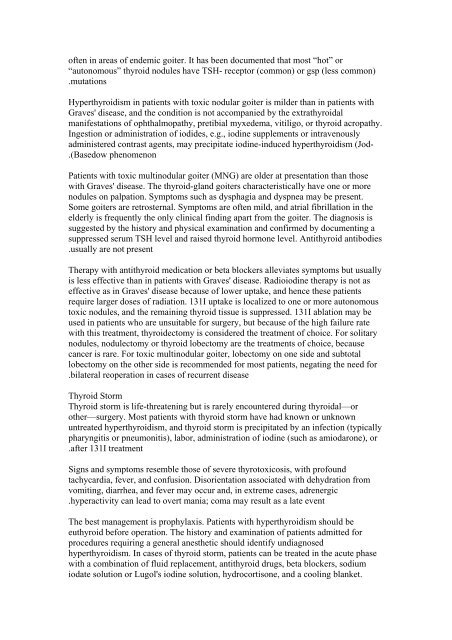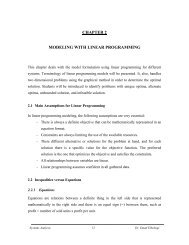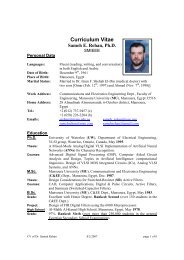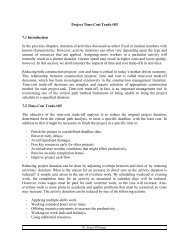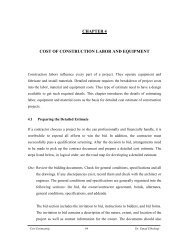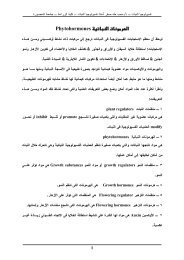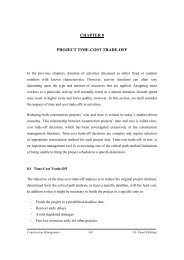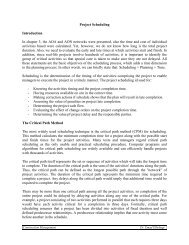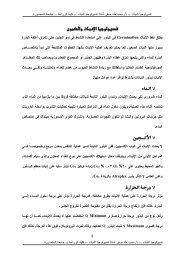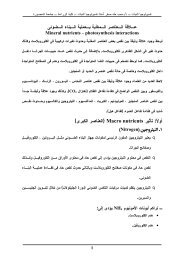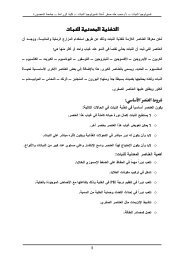Thyroid and Parathyroid
Thyroid and Parathyroid
Thyroid and Parathyroid
Create successful ePaper yourself
Turn your PDF publications into a flip-book with our unique Google optimized e-Paper software.
often in areas of endemic goiter. It has been documented that most “hot” or<br />
“autonomous” thyroid nodules have TSH- receptor (common) or gsp (less common)<br />
. mutations<br />
Hyperthyroidism in patients with toxic nodular goiter is milder than in patients with<br />
Graves' disease, <strong>and</strong> the condition is not accompanied by the extrathyroidal<br />
manifestations of ophthalmopathy, pretibial myxedema, vitiligo, or thyroid acropathy.<br />
Ingestion or administration of iodides, e.g., iodine supplements or intravenously<br />
administered contrast agents, may precipitate iodine-induced hyperthyroidism (Jod-<br />
.( Basedow phenomenon<br />
Patients with toxic multinodular goiter (MNG) are older at presentation than those<br />
with Graves' disease. The thyroid-gl<strong>and</strong> goiters characteristically have one or more<br />
nodules on palpation. Symptoms such as dysphagia <strong>and</strong> dyspnea may be present.<br />
Some goiters are retrosternal. Symptoms are often mild, <strong>and</strong> atrial fibrillation in the<br />
elderly is frequently the only clinical finding apart from the goiter. The diagnosis is<br />
suggested by the history <strong>and</strong> physical examination <strong>and</strong> confirmed by documenting a<br />
suppressed serum TSH level <strong>and</strong> raised thyroid hormone level. Antithyroid antibodies<br />
. usually are not present<br />
Therapy with antithyroid medication or beta blockers alleviates symptoms but usually<br />
is less effective than in patients with Graves' disease. Radioiodine therapy is not as<br />
effective as in Graves' disease because of lower uptake, <strong>and</strong> hence these patients<br />
require larger doses of radiation. 131I uptake is localized to one or more autonomous<br />
toxic nodules, <strong>and</strong> the remaining thyroid tissue is suppressed. 131I ablation may be<br />
used in patients who are unsuitable for surgery, but because of the high failure rate<br />
with this treatment, thyroidectomy is considered the treatment of choice. For solitary<br />
nodules, nodulectomy or thyroid lobectomy are the treatments of choice, because<br />
cancer is rare. For toxic multinodular goiter, lobectomy on one side <strong>and</strong> subtotal<br />
lobectomy on the other side is recommended for most patients, negating the need for<br />
. bilateral reoperation in cases of recurrent disease<br />
<strong>Thyroid</strong> Storm<br />
<strong>Thyroid</strong> storm is life-threatening but is rarely encountered during thyroidal—or<br />
other—surgery. Most patients with thyroid storm have had known or unknown<br />
untreated hyperthyroidism, <strong>and</strong> thyroid storm is precipitated by an infection (typically<br />
pharyngitis or pneumonitis), labor, administration of iodine (such as amiodarone), or<br />
. after 131I treatment<br />
Signs <strong>and</strong> symptoms resemble those of severe thyrotoxicosis, with profound<br />
tachycardia, fever, <strong>and</strong> confusion. Disorientation associated with dehydration from<br />
vomiting, diarrhea, <strong>and</strong> fever may occur <strong>and</strong>, in extreme cases, adrenergic<br />
. hyperactivity can lead to overt mania; coma may result as a late event<br />
The best management is prophylaxis. Patients with hyperthyroidism should be<br />
euthyroid before operation. The history <strong>and</strong> examination of patients admitted for<br />
procedures requiring a general anesthetic should identify undiagnosed<br />
hyperthyroidism. In cases of thyroid storm, patients can be treated in the acute phase<br />
with a combination of fluid replacement, antithyroid drugs, beta blockers, sodium<br />
iodate solution or Lugol's iodine solution, hydrocortisone, <strong>and</strong> a cooling blanket.


